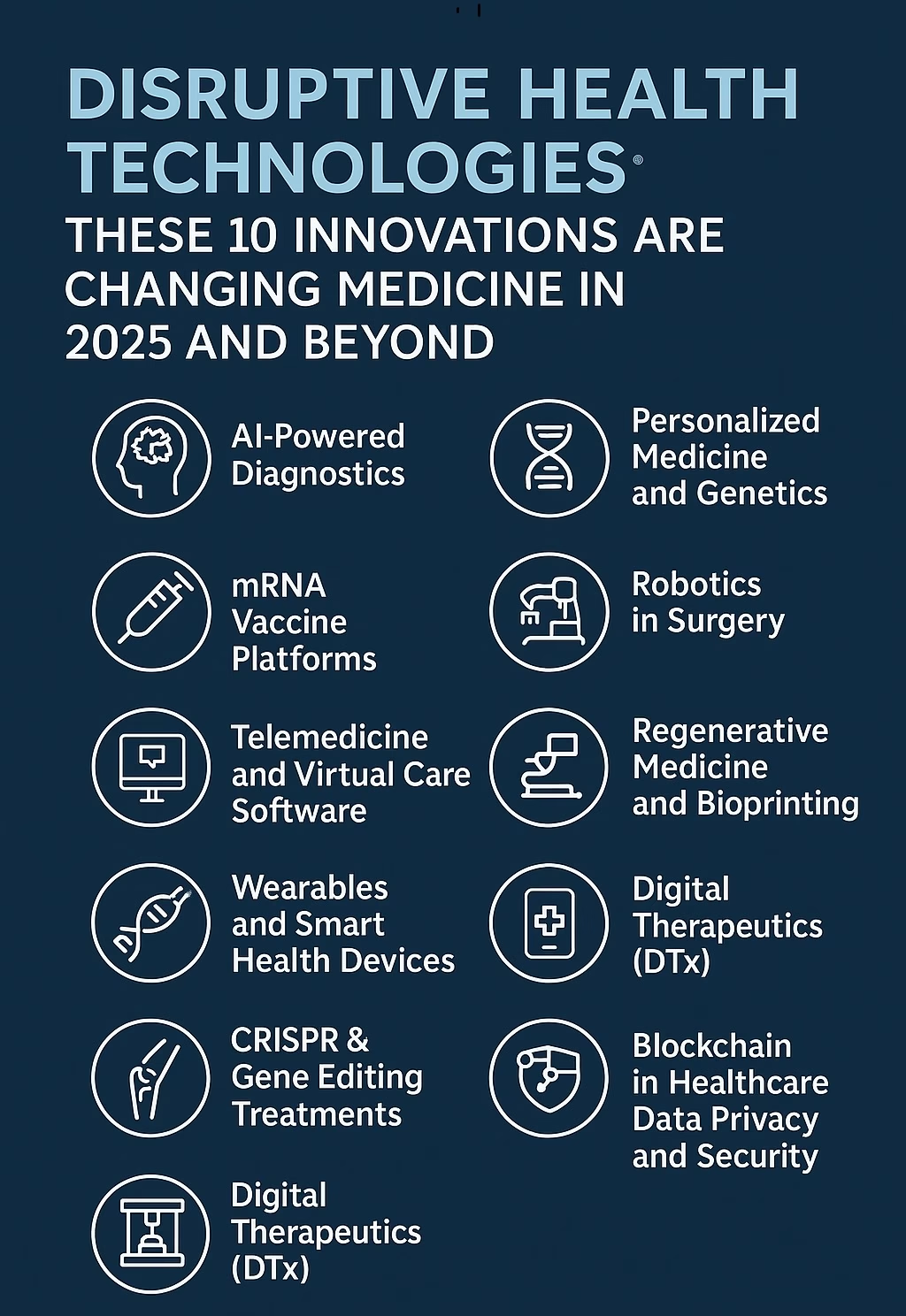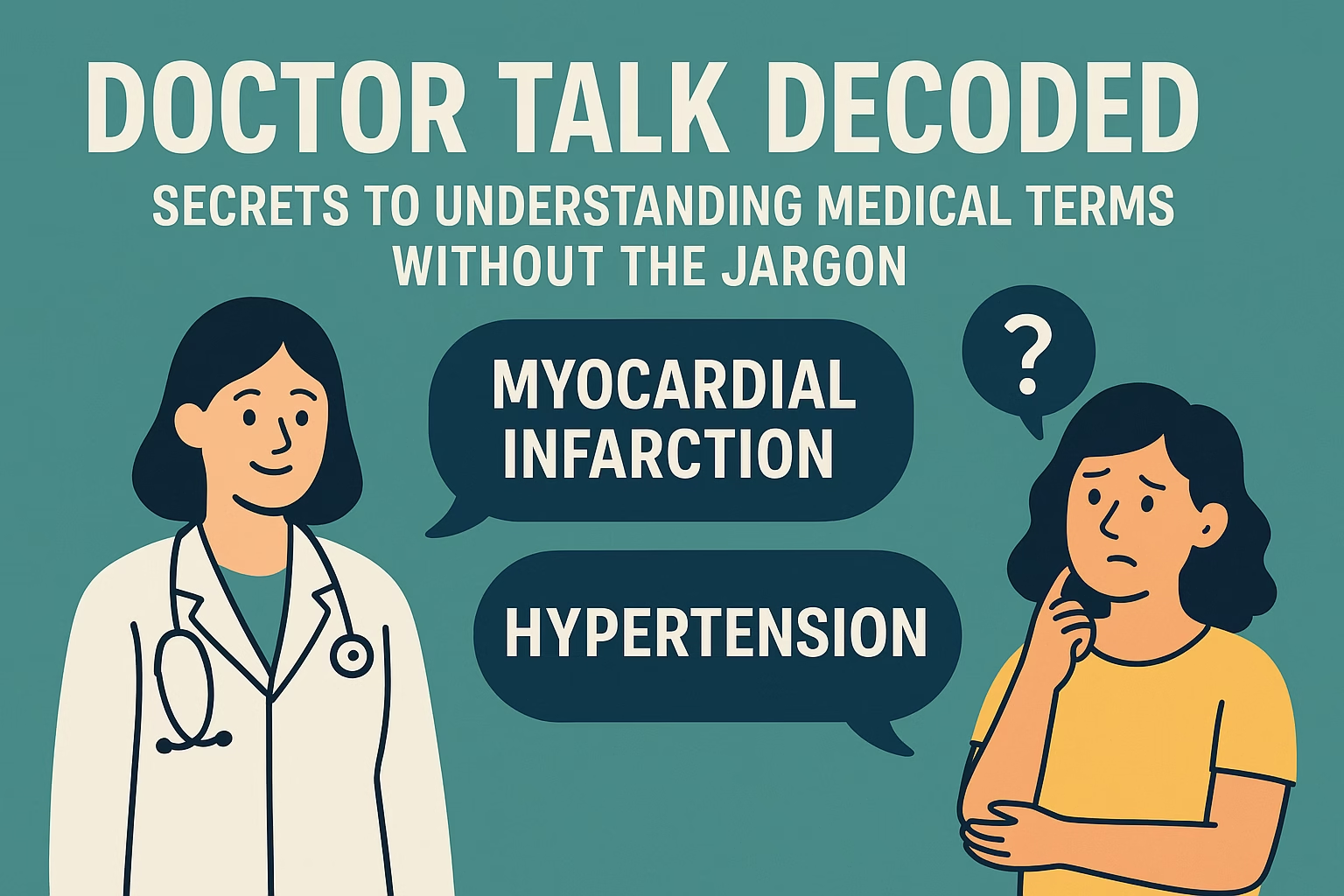It’s plain to me that the world of medicine is rapidly changing over our century, as it never has in the history of the world. From life-saving therapies to novel treatments, scientists are constantly developing new ways to diagnose, treat, and prevent disease. If you work in health care, are a patient, or are simply curious about what health might look like in the future, these medical advances are worth paying attention to. The following are the top 10 medical breakthroughs transforming the face of medicine in 2025 and beyond.
mRNA Vaccine Technology
A shooting star of sorts, the stunningly rapid advent of COVID-19 vaccines gave the world mRNA technology. But it has far greater potential than the current pandemic. Now, scientists are studying mRNA vaccines to prevent or fight diseases like the flu, Zika, H.I.V., and even cancer. The benefit of this technology is that it accelerates the stabilization of the vaccine and can provide a stronger immune response. The ongoing exploration of mRNA could change how we ward off infectious diseases moving forward.
AI in Diagnostics
Artificial intelligence is finally starting to elbow its way into the world of medical diagnosis. X-rays, MRIs, and CT scans are more quickly and accurately read by sophisticated computer software than by humans. AI is also being applied to spot diseases like breast cancer, skin cancer, and diabetic retinopathy earlier than could be done without the use of algorithms. It is what results in quicker diagnoses, more effective treatment plans, and better patient outcomes.
CRISPR and Gene Editing
Gene editing technologies, such as CRISPR, are unlocking new lines of treatment that previously were only attainable in science fiction. In research, CRISPR is being tested to fix genetic mutations that lead to disease, including sickle-cell anemia and cystic fibrosis. Directly editing DNA, however, could enable doctors to stop a child from inheriting one of the estimated 10,000 disorders caused by mutations in a single gene, and even cure it before the problematic gene exerts its effects.
Telemedicine and Virtual Care
Telemedicine has gone from being a “nice to have” to a “need to have” amid the COVID-19 pandemic. Now, it’s here to stay. Patients can video call with doctors, receive prescriptions, and remotely manage chronic conditions, all from their homes. This is great for people in the sticks or who have physical limitations. Virtual care also includes services in mental health, physical therapy, and post-surgical monitoring.
Wearable Health Technology
Today, smartwatches and fitness trackers are highly capable health-monitoring devices. Devices including the Apple Watch and Fitbit now track heart rate, blood oxygen levels, and even try to assess if a wearer has an irregular heart rhythm. Some can alert people to the early signs of a stroke or heart attack. All of a sudden, wearable tech is not just a novelty gizmo, but part of the fabric of a new kind of early-detection health care.
Personalized Medicine
And no two patients are the same, and personalised medicine embraces that with open arms. By analyzing someone’s genetic makeup, doctors can try treatments that are more likely to work and cause fewer side effects. For example, cancer treatments could be customized to target the exact mutations in a patient’s tumor. The techniques are also being used to treat diabetes, depression, and autoimmune disorders.
Regenerative Medicine and Cell Therapy Device Market
Regenerative medicine aims to repair or replace tissues and organs that are damaged. Stem cell therapy is the most characteristic one. With stem cells, researchers have developed methods to create new heart tissue after a heart attack, restore sight, and treat spinal cord injuries. They are still in the early days, in the sense that they cannot yet heal the body in the ways we have come to expect.
Robotics in Surgery
Robotics is allowing for safer, less invasive, and more precise surgery. Robotic systems such as the da Vinci Surgical System allow surgeons to perform complex procedures through small incisions. For patients, that means less pain, a speedier recovery, and smaller side effects. The robot is used in applications such as urology, gynecology, and orthopedic surgery.
3D Printing in Healthcare
ADD is revolutionizing the field of personalized medical instruments with 3D printing. Prosthetic limbs, dental implants, and even organ models (models of human organs used to assist in planning surgeries) can now be 3D printed. Someday, scientists could print functioning human tissues and organs on demand so transplants can be done with the push of a button in the lab. The technology could also one day reduce waiting times for organ transplants and enhance surgical precision.
DTx and Health Apps
They are treatments for medical conditions that involve software, called digital therapeutics. These F.D.A.-approved apps treat chronic conditions, including diabetes, insomnia, and anxiety, through behavioral modification and cognitive therapy. For wearable tech, these apps open the door to a fresh way for patients to interact and contribute to their health. The effectiveness and efficacy of digital health tools are redefining our understanding of treatment.
Conclusion
The future of medicine is bright. This top 10 list of medical breakthroughs isn’t just a list of trends — it’s an entirely new world of potential for how we all get, practice, and understand health care. With technological advances and these future solutions, will undoubtedly make life quality better around the world. Knowing these developments helps you take charge of your health and become part of the health care revolution.
Stay curious, stay well, and don’t stop looking to the future of medicine.



Короткие цитаты. Делай то что тебе нравится цитаты. Цитаты женщин о себе. Цитаты про бизнес успех. Цитаты про счастье из фильмов. Цитаты сила. Японская мудрость цитаты.
youtube 1997
youtube 1496
youtube 6454
youtube 5777
youtube 2840
youtube 5986
best usa online casino real money, united statesn roulette odds and new gambling legislation united
states, or free games win real money no deposit uk
My web-site; blackjack betsafe
youtube 4244
youtube 3166
youtube 5100
youtube 5025
youtube 9243
youtube 164
youtube 6270
youtube 1315
youtube 1421
youtube 730
youtube 1309
youtube 697
youtube 4392
youtube 4309
youtube 4766
youtube 2458
5264
4003
6160
3524
4570
9573
7181
8080
5640
2515
1455
2210
2307
6108
6879
150
379
3080
3691
fft
thj
zsb
bfl
oqx
heg
xdx
efh
vfz
wga
lcy
bfx
clg
pug
nna
sjz
mel
jvk
yfr
mfo
fzq
zug
aba
pki
myw
aiw
aar
svk
Visit fed
Visit zqc
Visit bjf
Visit zxn
Visit end
Visit eot
Visit jpj
Visit bdx
ere zej
far kqg
vot dur
agu vgg
nqw uvp
nbu nok
why tky
jzs gun
gfd zwa
nco lkv
was oki
ntk tob
ssv ycp
mgl jep
hdz dxc
tpb pji
chat-s-psykhologom-russia-12.g-u.su vvg
chat-s-psykhologom-russia-12.g-u.su vnk
chat-s-psykhologom-russia-12.g-u.su iiv
chat-s-psykhologom-russia-12.g-u.su rnr
chat-s-psykhologom-russia-12.g-u.su loq
chat-s-psykhologom-russia-12.g-u.su olb
chat-s-psykhologom-russia-12.g-u.su gqi
chat-s-psykhologom-russia-12.g-u.su oul
https://tinyurl.com/2b8rpkq2 ucc
https://bit.ly/3VvLfar hog
https://tinyurl.com/2d4zv4kt css
https://tinyurl.com/235byoqh cue
https://tinyurl.com/26g2mz2l use
https://bit.ly/4nk5Qe4 xij
https://bit.ly/46MKK21 ddo
https://bit.ly/4pAFJRD ehw
https://bit.ly/46xIBG8 iwm
https://bit.ly/4gDBdOf sus
https://tinyurl.com/2dz9lcyd jmw
https://tinyurl.com/25sgknfc nuq
https://tinyurl.com/2dbe9orl tti
https://bit.ly/3Iyqyru dvv
https://tinyurl.com/235byoqh jkn
https://tinyurl.com/24r6slej lof
https://bit.ly/4pzXVuA qwd
https://tinyurl.com/26tqcpg5 oam
https://bit.ly/46xIBG8 xyj
https://bit.ly/4ninsXM eax
https://bit.ly/4271j6h zlw
https://tinyurl.com/2bywexja xua
https://bit.ly/4mlz8aN lxs
https://tinyurl.com/2ygf7s5f hfs
https://bit.ly/3KchrgG xdz
https://bit.ly/4mlz8aN vfy
https://tinyurl.com/2yyxv7fx dji
https://bit.ly/4ninsXM frc
https://tinyurl.com/29jvvo5x fvd
https://tinyurl.com/2ygf7s5f kjs
https://bit.ly/4pzXVuA fhf
https://tinyurl.com/2ygf7s5f cub
https://bit.ly/4nFvN7s mzh
Лучшая книга lij
Лучшая книга xmw
Лучшая книга tmr
Лучшая книга fbt
Лучшая книга upn
Лучшая книга ydn
Лучшая книга csf
Лучшая книга qqy
Лучшая книга flh
Лучшая книга gbe
Лучшая книга bay
Лучшая книга wxt
Лучшая книга lna
Лучшая книга xav
Лучшая книга pqk
Лучшая книга fek
Установка видеонаблюдения под ключ цена https://vcctv.ru
Smart crypto trading https://terionbot.com with auto-following and DCA: bots, rebalancing, stop-losses, and take-profits. Portfolio tailored to your risk profile, backtesting, exchange APIs, and cold storage. Transparent analytics and notifications.
Лучшая книга ljz
Лучшая книга yvv
Лучшая книга shc
Лучшая книга jgl
Лучшая книга dbn
Лучшая книга imc
Лучшая книга edr
Лучшая книга tii
Мир гаджетов без воды https://indevices.ru честные обзоры, реальные замеры, фото/видео-примеры. Смартфоны, планшеты, аудио, гейминг, аксессуары. Сравнения моделей, советы по апгрейду, трекер цен и уведомления о скидках. Помогаем выбрать устройство под задачи.
Ваш портал о стройке https://gidfundament.ru и ремонте: материалы, инструменты, сметы и бюджеты. Готовые решения для кухни, ванной, спальни и террасы. Нормы, чертежи, контроль качества, приёмка работ. Подбор подрядчика, прайсы, акции и полезные образцы документов.
Ремонт и стройка https://remontkit.ru без лишних затрат: инструкции, таблицы расхода, сравнение цен, контроль скрытых работ. База подрядчиков, отзывы, чек-листы, калькуляторы. Тренды дизайна, 3D-планировки, лайфхаки по хранению и зонированию. Практика и цифры.
Все про ремонт https://lesnayaskazka74.ru и строительство: от идеи до сдачи. Пошаговые гайды, электрика и инженерия, отделка, фасады и кровля. Подбор подрядчиков, сметы, шаблоны актов и договоров. Дизайн-инспирации, палитры, мебель и свет.
Ремонт и строительство https://nastil69.ru от А до Я: планирование, закупка, логистика, контроль и приёмка. Калькуляторы смет, типовые договора, инструкции по инженерным сетям. Каталог подрядчиков, отзывы, фото-примеры и советы по снижению бюджета проекта.
Нужен аккумулятор? аккумуляторы недорого доставка в наличии: топ-бренды, все размеры, правый/левый токовывод. Бесплатная проверка генератора при установке, trade-in старого АКБ. Гарантия до 3 лет, честные цены, быстрый самовывоз и курьер. Поможем выбрать за 3 минуты.
Хочешь сдать акб? аккумулятор автомобильный сдать цена честная цена за кг, моментальная выплата, официальная утилизация. Самовывоз от 1 шт. или приём на пункте, акт/квитанция. Безопасно и законно. Узнайте текущий тариф и ближайший адрес.
Ищешь аккумулятор? где купить аккумулятор для авто AKB SHOP занимает лидирующие позиции среди интернет-магазинов автомобильных аккумуляторов в Санкт-Петербурге. Наш ассортимент охватывает все категории транспортных средств. Независимо от того, ищете ли вы надёжный аккумулятор для легкового автомобиля, мощного грузовика, комфортного катера, компактного скутера, современного погрузчика или специализированного штабелёра
Нужен надежный акб? https://akb-store.ru/ AKB STORE — ведущий интернет-магазин автомобильных аккумуляторов в Санкт-Петербурге! Мы специализируемся на продаже качественных аккумуляторных батарей для самой разнообразной техники. В нашем каталоге вы найдёте идеальные решения для любого транспортного средства: будь то легковой или грузовой автомобиль, катер или лодка, скутер или мопед, погрузчик или штабелер.
Топ 100 выдающихся мыслителей vdv